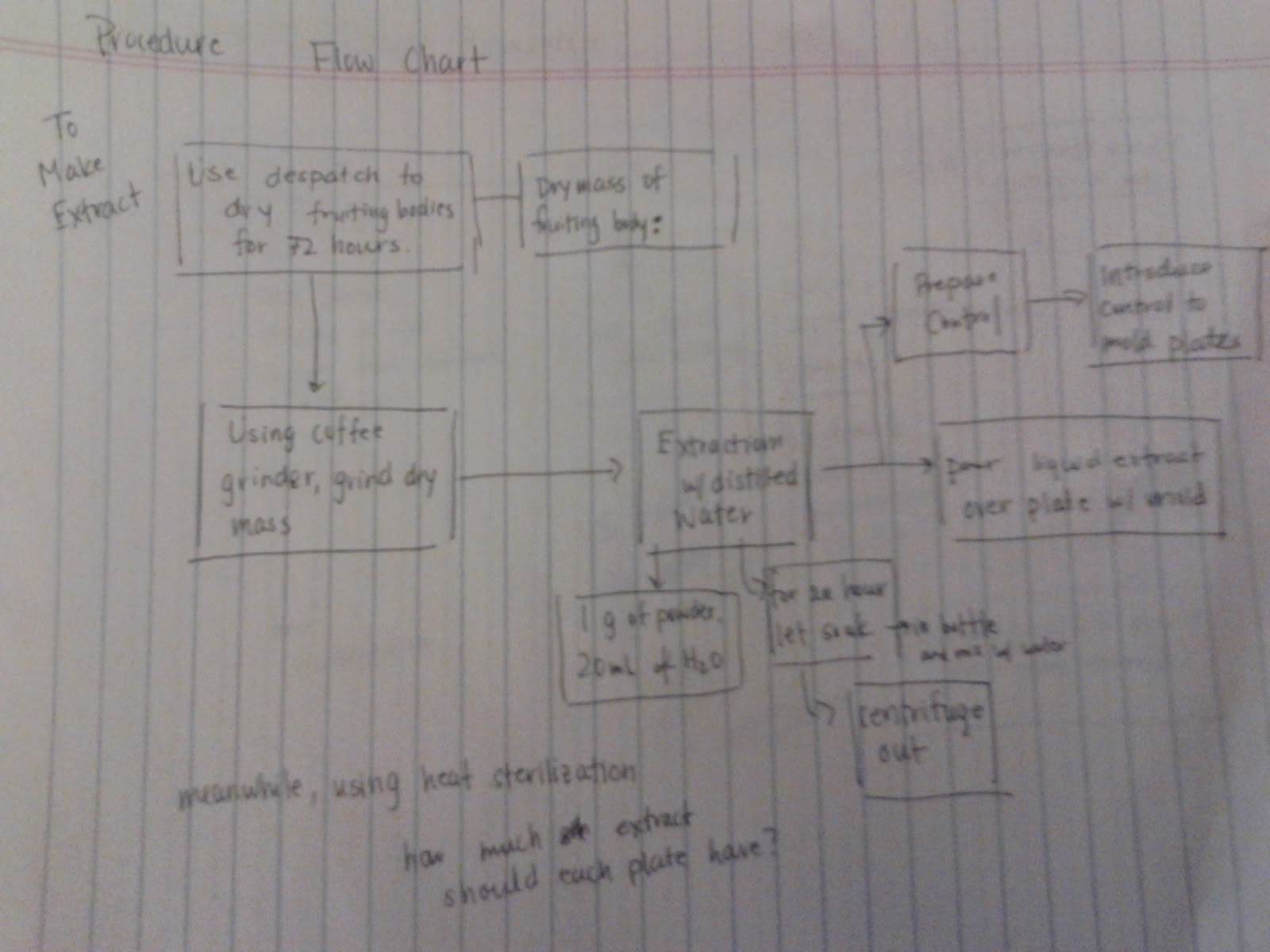 |
| One of my flow charts |
After sorting corn, I went to work on designing the procedure of my experiment. From my research, I knew the general outline that I had to follow, but the details were vague. I didn't know what equipment was available to me, and since I want to work with a pathogen, how was I going to do this without contaminating the whole lab? Courtney clarified many of these details and suggested that I utilize a flow chart to help organize my thoughts and details. The flow chart especially helps with figuring out the timing. What else could I be doing when the mushrooms are drying or how long does it take to centrifuge? Since I have limited time, this is crucial.
My final experiment will be comparing the antibacterial properties of Pleurotus ostreatus and Coprinus cinereus on Aspergiillus niger.
My first DoE, the one looking to compare light and dark reactions came out with data. Based off of the data for the fruiting bodies wet weight, the light mushrooms had the greatest average wet weight. This is not what we predicted but it is helpful to know nonetheless.
Thanks for sharing your flowchart - it's a great way to get all of your ideas down and to see how they fit together. Now you see the value of a lab notebook! So often, you may have ideas or questions that you'll want to write down to come back to later. Or you may notice something weird with your samples and you may not be sure if it's significant or not. Write it down just in case. You may even think of ideas for other experiments - write those down too.
ReplyDeleteDid you know that the way you use a vibrating sieve shaker to separate substrate in your biological experiments is pretty much the same way that engineers separate out rock aggregate for concrete? Have you ever looked at a concrete sidewalk and noticed all the rocks of different sizes? Those rocks are called "aggregate" and concrete is designed with different amounts of different sized aggregate to help it stay bonded together under specific loading conditions. Concrete designers get giant piles of dirt rock and use the sieve shakers to separate out the different sized aggregates to use in their concrete formula.
ReplyDelete